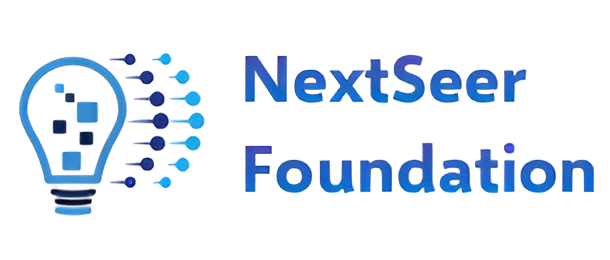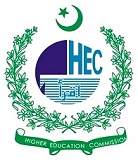Author Guidelines
Please read the guidelines below, then visit the journal’s submission site, Submissions | Journal of Computers and Intelligent Systems to upload your manuscript. Please note that manuscripts not conforming to these guidelines may be returned. Recommended guidelines include bibliographic and formatting standards, along with examples of common citation formats to be used in submissions.
Style and Format
File format: Manuscript files can be in the following formats: DOC or DOCX. Microsoft Word documents should not be locked or protected.
Language: Manuscripts must be submitted in English.
Page Setup: – Author should choose A4 for page size with the margins set up as follows: Top: 1.31 cm, Bottom: 025 cm, Left: 1.00 cm, and Right: 1.00 cm.
Layout: The manuscript text should be set to 1.08 line spacing. The document text must be justified, not centred nor right-justified. The space after paragraph should be 1.25 and the indentation is set to -0.50 cm. Please avoid formatting the text in multiple columns.
Font: For English papers, kindly use Aptos (body) or Gentium font, with a size of 10 for the texts and 9 for the notes.
Headings: You are advised to limit manuscript sections and sub-sections to 3 heading levels. Make sure heading levels are clearly indicated in the manuscript text.
Scriptural citations : they must be mentioned in the notes (e.g., the footnotes).
Abbreviations: Define abbreviations upon their first appearance in the text. Do not use non-standard abbreviations unless they appear at least three times in the text. Keep abbreviations to a minimum.
In-Text Citations: Use IEEE (notes-bibliography ) style for in-text citations. If you are using APA and you wish to cite an edited classical work, kindly inform us that the date is referring to the date of the critical edition by placing “ed.”.
Reference style: The references must be arranged increasing order at the end of the paper,
Manuscript Organisation
Papers should be organised as follows:. Instructions for each item will be given at the end of the list.
Beginning section: The following items are required, in order:
1. Title
2. Abstract.
3. Keywords and phrases.
4. Abstract.
5. Keywords
6. Introduction
Middle section: The following headings can be renamed whenever necessary and presented in any order:
1. Materials and Methods
2. Results
3. Discussion
4. Conclusions (optional)
Ending section - The following items are required, in order:
1. Acknowledgments (if applicable)
2. References
3. Supporting Information Captions (if applicable)
Other elements
1. Figure captions are inserted immediately after the first paragraph in which the figure is cited.
2. Figure files are uploaded separately.
3. Tables are inserted immediately after the first paragraph in which they are cited.
4. Supporting information files are uploaded separately.
Preparing Your Manuscript
Title
1. Provide the full title.
2. Length: not exceeding 150 characters.
Capitalise Each Word.
1. Align: Left
2. Specific, descriptive, concise, and comprehensible to readers outside the field.
Author /authors
1.00 spacing between the title and the author name.
Use the superscript at the end of the name to indicate the corresponding author.
Write author names in the following order:
· First name (or initials, if used)
· Middle name (or initials, if used)
· Last name (surname, family name)
Each author on the list must have an affiliation. The affiliation includes department, university, or organisational affiliation and its location, including city, state/province (if applicable), and country.
If an author has multiple affiliations, provide other affiliations in the email to the editor. In the paper and the submission system, enter only the preferred or primary affiliation.
Only One corresponding author should be designated in the submission system as well as on the paper.
1.5 spacing between the affiliation address and the corresponding author’s email. The email address should be preceded by: *Corresponding author:
Abstract
The word abstract should be placed at the beginning of the paragraph in bold and followed by a period like this: Abstract.
1. Typed in 1 spaced and font-size 9 pt.
2. The Abstract should:
· Describe the main objective(s) of the study
· Explain the methodology adopted in the research
· Summarise the most important results and their significance
· Not exceeding 350 words.
Abstracts should not include citations or abbreviations, if possible.
Keywords and phrases
FIVE keywords or phrases must be provided after the abstract.
The term “Keywords and phrases” should be placed at the beginning of the texts in bold and followed by a colon like this: Keywords and phrases:
The first letter of the word or phrase must be capitalised.
Keywords bearing the name of a discipline or an area of scholarship are more preferable.
Introduction
The introduction may:
· Provide background that puts the manuscript into context and allows readers outside the field to understand the purpose and significance of the study.
· Define the problem addressed and why it is important.
· Include a brief review of the key literature.
· Note any relevant controversies or disagreements in the field.
· Conclude with a brief statement of the overall aim of the work and a comment about whether that aim was achieved.
Acknowledgments
The acknowledgment should not exceed ONE short paragraph (approximately 150 words).
References
Any and all available works can be cited in the reference list. Acceptable sources include:
· Published or accepted manuscripts.
· Manuscripts on pre-print servers, if the manuscript is submitted to a journal and also publicly available as a pre-print.
Do not cite the following sources in the reference list:
· Personal communications (these should be supported by a letter from the relevant authors but not included in the reference list)
Author Responsibilities:
- It is the sole responsibility of the writer to ensure that the article is grammatically correct.
- The article has not been published elsewhere or is currently under consideration by any other journals.
- The article must be new and original and not have been submitted to any other journal.
Copyediting manuscripts
Prior to publication, authors who believe their manuscripts would benefit from professional editing are encouraged to use language-editing and copyediting services. Obtaining this service is the responsibility of the author, and should be done before initial submission. These services can be found on the web using search terms like “scientific editing service” or “manuscript editing service.”




